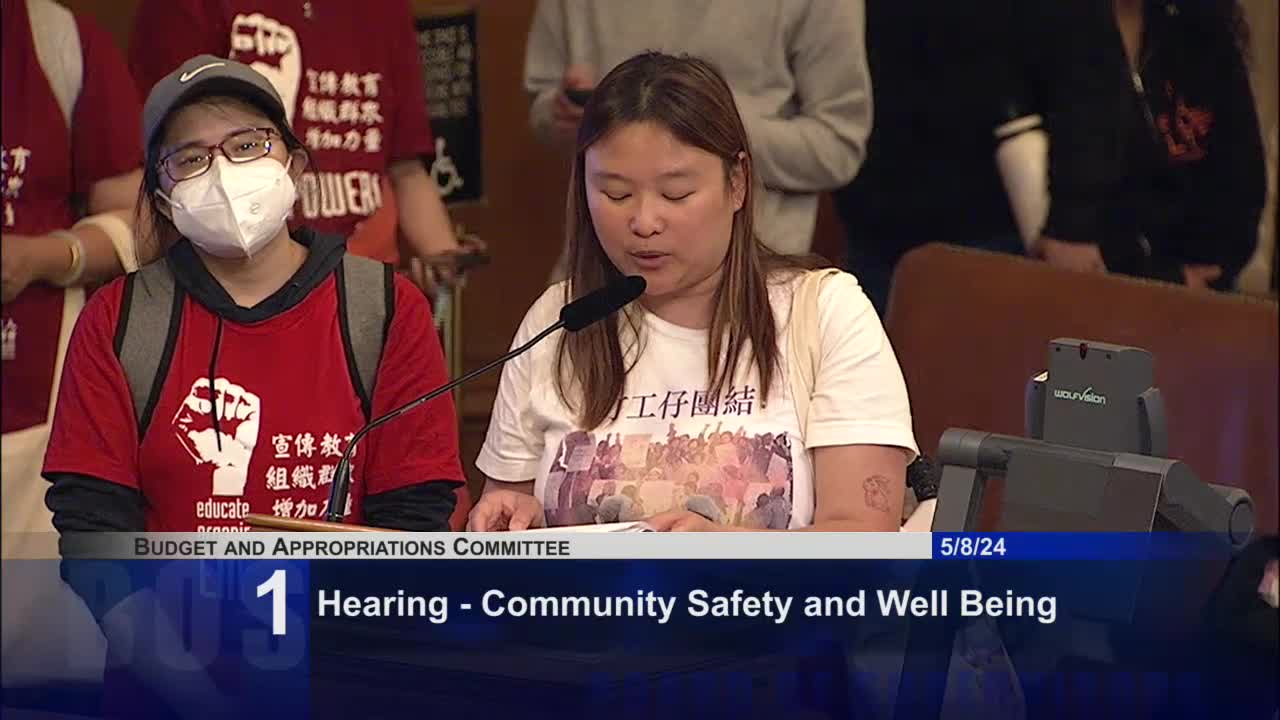San Francisco youth leaders advocate for funding community safety programs
May 08, 2024 | San Francisco County, California

This article was created by AI summarizing key points discussed. AI makes mistakes, so for full details and context, please refer to the video of the full meeting. Please report any errors so we can fix them. Report an error »

In a recent San Francisco County government meeting, community leaders and youth advocates passionately urged the city to maintain funding for essential youth programs that promote understanding and safety among diverse communities. The discussions highlighted the critical role of organizations like the Chinese Progressive Association (CPA) and the Latino Task Force in fostering inclusivity and addressing the needs of marginalized groups.
Several speakers, including parents and youth leaders, shared personal stories illustrating how these programs have transformed lives. One parent emphasized that after-school programs not only assist children with homework but also teach them about mental health and cultural diversity, significantly boosting their confidence and reducing conflict among peers. Another youth leader, Sam Foley, spoke about the importance of community spaces where young people can connect and discuss social justice issues without fear of judgment, reinforcing the idea that understanding different backgrounds is key to building a safer community.
The Latino Task Force also made a strong case for continued support, noting that their services reach over 10,000 community members annually, providing vital resources for education, housing, and economic relief. They highlighted the potential negative impact of funding cuts on vulnerable populations, particularly newcomer and bilingual students who rely on summer programs for learning and support.
As the meeting progressed, speakers collectively called for the city to prioritize investments in youth programs, arguing that such funding is not just a budgetary decision but a reflection of the city’s values and commitment to its residents. They urged city officials to recognize the long-term benefits of supporting these initiatives, which are crucial for fostering a cohesive and resilient community.
The meeting underscored a shared belief among community members that investing in youth is essential for the future of San Francisco, as it lays the groundwork for a more inclusive and understanding society. As discussions continue, the fate of these programs remains a pivotal concern for many residents who see them as lifelines for their children and the broader community.
Several speakers, including parents and youth leaders, shared personal stories illustrating how these programs have transformed lives. One parent emphasized that after-school programs not only assist children with homework but also teach them about mental health and cultural diversity, significantly boosting their confidence and reducing conflict among peers. Another youth leader, Sam Foley, spoke about the importance of community spaces where young people can connect and discuss social justice issues without fear of judgment, reinforcing the idea that understanding different backgrounds is key to building a safer community.
The Latino Task Force also made a strong case for continued support, noting that their services reach over 10,000 community members annually, providing vital resources for education, housing, and economic relief. They highlighted the potential negative impact of funding cuts on vulnerable populations, particularly newcomer and bilingual students who rely on summer programs for learning and support.
As the meeting progressed, speakers collectively called for the city to prioritize investments in youth programs, arguing that such funding is not just a budgetary decision but a reflection of the city’s values and commitment to its residents. They urged city officials to recognize the long-term benefits of supporting these initiatives, which are crucial for fostering a cohesive and resilient community.
The meeting underscored a shared belief among community members that investing in youth is essential for the future of San Francisco, as it lays the groundwork for a more inclusive and understanding society. As discussions continue, the fate of these programs remains a pivotal concern for many residents who see them as lifelines for their children and the broader community.
View full meeting
This article is based on a recent meeting—watch the full video and explore the complete transcript for deeper insights into the discussion.
View full meeting
